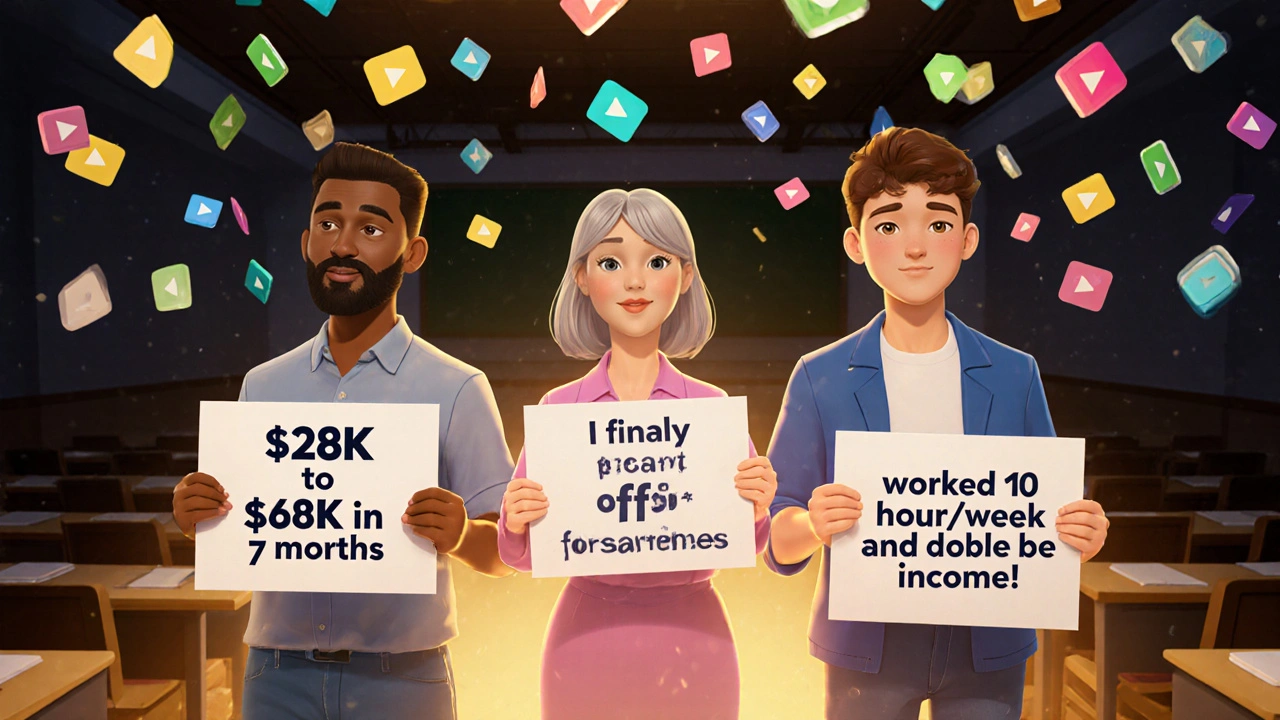Online Course Marketing: How to Sell Courses That Actually Stick
When you sell an online course, a structured learning experience delivered digitally, often with videos, quizzes, and community access. Also known as e-learning, it’s not enough to just build it—you need to get the right people to pay for it and actually finish it. Most people think online course marketing is about running Facebook ads or blasting email sequences. But the real game is about trust, timing, and showing people exactly how this changes their life—not just what they’ll learn.
Successful online course marketing, the process of attracting, converting, and retaining learners through value-driven strategies doesn’t start with a sales page. It starts with understanding who your learner is right now. Are they overwhelmed? Stuck in a job they hate? Trying to switch careers but don’t know where to start? Your marketing needs to speak to that pain, not just list your modules. That’s why posts like Course Cohorts vs Self-Paced Models matter—they show you that structure and community drive completion rates. And why Gamification in Online Courses and Escape Rooms and Interactive Puzzles aren’t just fun—they’re tools that turn passive viewers into active participants who stick around.
Then there’s the backend. You can have the best course in the world, but if your course platform, the system that hosts, delivers, and manages your course content and student data doesn’t feel secure or professional, people won’t buy. That’s why White-Label Mobile Apps and SOC 2 Certification show up in this collection. Buyers don’t just pay for content—they pay for safety, reliability, and a brand they can trust. And if you’re selling to businesses, you need Certification Programs That Employers Actually Trust—because corporate buyers don’t care about flashy videos. They care about measurable skills and ROI.
Here’s the truth: no one buys a course because it’s cheap. They buy it because they believe it’s the answer to their problem. Your marketing needs to prove that belief. That means showing real results—not testimonials that say "This changed my life," but case studies that say "This person went from $30k to $70k in 6 months using Module 3." It means using Micro-Learning to give free value upfront so people see the payoff before they pay. It means designing Office Hours Formats that make learners feel seen, so they don’t disappear after Week 1.
You’ll find all of this here—real strategies from people who’ve built courses that actually sell, retain, and scale. No fluff. No buzzwords. Just what works when you’re trying to turn knowledge into income without burning out your audience. Below, you’ll see exactly how top creators design their courses, protect their legal ground, keep learners engaged, and build systems that work long after the launch is over.

Course Testimonials and Social Proof Strategies That Actually Convert
Real student testimonials and authentic social proof turn hesitant visitors into paying customers. Learn how to collect, display, and use real stories to build trust and boost conversions for your online course.